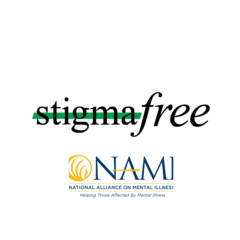History of Temple Isaiah
Early 1900’s Jewish families from Boston’s West End began to move to the “country” to escape the city’s noise and dirt. Sylvia Street, half in Arlington and half in Lexington, became a new “shtetl,” building its own Orthodox synagogue, B’nai Jacob, in 1911. The structure still stands today.
1945 B’nai Jacob enjoyed the influx of a new population after World War Two. By 1945 it had changed its affiliation to Conservative, but its children had to be sent elsewhere for a Jewish education. Meanwhile, a group of Jewish families organized the Arlington Jewish Center, which quickly flourished as a social and cultural organization separate from B’nai Jacob but drawing on it for membership. For the Arlington Center, the main goal was a religious school, and its Sunday School quickly expanded to three-day-a-week Hebrew classes. Youth groups were formed, and suppers, plays, musicals, and sports events strengthened the group and its desire for its own building.
1955 The combined organization, now called the Arlington-Lexington-Bedford Jewish Community Center, purchased a building at 1508 Massachusetts Avenue in Lexington, using money from the sale of the Sylvia Street building. As membership increased, so did the desire for a single spiritual leader. Rabbi Judah Stempfer, a Harvard doctoral student accepted the part-time post. The first Bar Mitzvah in the new building was that of Isaiah’s lifetime member, Marshall Derby, z"l.
1959 By 1958, the Center included about 150 families and a vibrant school covering seven grades. In 1959 the search for a rabbi revealed serious differences within the congregation. The Board voted to select Rabbi Bernard Bloom, a Reform rabbi. Conservative members reacted by calling a meeting of the membership which rescinded the Board decision. In response, another group decided to honor their commitment to Rabbi Bloom and form a new congregation dedicated to liberal Judaism. Temple Isaiah was born on June 5, 1959, in the home of one of its members, and a program of religious, educational, and social activities was immediately set in motion. Three Lexington churches—Methodist, First Parish, and Hancock—generously offered space, and Temple Isaiah, with 71 families, was on its way. View Founding Members
1960 Just months after it was founded, Temple Isaiah was offering meaningful religious services under Rabbi Bloom, enhanced by the music of a volunteer choir. The custom of an Oneg after Shabbat services was initiated, Bible study and adult education classes were offered, and, most important, a youth education program was firmly established, with 73 children. The first Torah was received and the first Bar Mitzvah ceremony took place, followed by the first Bat Mitzvah service. Sisterhood was formed, and a section of Lexington’s Westview Cemetery was designated as a Jewish cemetery. A building committee was authorized to purchase land, and a purchase agreement for the present site on Lincoln Street was signed. By the end of the year, the Temple had added 41 new families. (Scroll down for videos telling the stories of how Temple Isaiah was founded.)
1961 The Board approved the hiring of thirteen teachers for the following school year. Building fever spread, and a campaign was initiated to raise funds for a Temple site. The newly elected president, in speaking about building decisions, stated “We do not intend to build elaborately or extravagantly. Good taste rather than extravagance will guide us.” After a thorough search process, Herbert Glassman, president of an architectural firm as well as a Temple member, was chosen as architect.
1962 On May 6, ground was broken for the new Temple building. A Senior High Youth Group was formed, and the first Sisterhood Donor Dinner was held at the Battle Green Inn. By the end of the year, school enrollment numbered over 200.
1963 In May of 1963, the first Annual Meeting was held in the new building, and Rabbi Haskell Bernat was selected as the new spiritual leader. On September 13-15 the official Dedication Weekend for the new building was celebrated with great joy and pride by the 160 member families. The congregation under Rabbi Bernat used the sanctuary with movable seating as an opportunity to experiment with various forms of worship and interaction. The Temple initiated joint classes and social events with Temple Emunah, Lexington’s Conservative Temple. The volunteer choir remained an integral part of Shabbat services, with the addition of a folk musician, and the Temple became known as a “singing congregation”
1964 In January 1964 the first wedding in the new building took place. It was also the year of the first Brotherhood Breakfast. Dr. John Sturrock, an Australian psychiatrist addressed the attendees—the beginning of a continuing tradition of noteworthy speakers at Sunday morning breakfasts. The school continued to grow, and a professional educator was appointed as school principal. Membership and school activities were rapidly outgrowing the facilities, necessitating holding double school sessions on weekends and moving High Holiday services to the Lexington Armory.
Rabbi Bernat and founding member Maia Sherman inaugurated the first season of the Isaiah Arts Institute with a Shabbat evening exploring sacred dance, culminating in a challenge to members to use dance to interpret and deepen the meaning of worship. Isaiah’s dance service the next year was recognized as the first attempt by a synagogue since ancient times to use dance to enhance public worship. Eminent dance figures were invited to expand the boundaries of Jewish liturgy as the Arts Institute became a yearly event, and in 1966 LIFE magazine published an article extolling the Temple’s boldness and creativity. In 1969 Rabbi Bernat was invited to present a dance service at the Biennial UHAC Convention. Before an audience of 2000, a service previously performed at Temple Isaiah brought the audience to their feet and the Temple into national recognition.
Other artistic media were included. Authors Isaac Bashevis Singer, Maurice Samuels, and Howard Fast explored how Judaism inspired their work, and the congregation, in turn, used their own writings as texts for the worship service. Many painters exhibited their work at the Temple, as did Louis Kahn, America’s architect laureate. Music was represented by Martha Schlemme, an acclaimed Yiddish folk singer and interpreter of Kurt Weill, and by Shlomo Carlebach, a Hassidic troubadour and a composer and performance artist.
1966-68 The November Congregational Meeting recognized the need for expanding the facilities and took preliminary steps for an addition. In May of 1968, the Board was instructed to negotiate with the owner of the property adjacent to the Temple and, if successful, proceed with plans for a new wing. Herb Glassman, the original architect for the Temple, was engaged as the architect for the addition.
1969 On October 10 and 11, the Temple celebrated its tenth anniversary with a weekend of festivities. The Congregational Meeting approved an expansion including an enlarged sanctuary-social hall, a kitchen, a gift shop, and a Rabbi’s study.
1970 In December 1970, the Temple welcomed its first third-generation member with the arrival of Jay Kline, son of Susi and Brickey Kline and grandson of founding members Florence and Milton Gould.
1971 The congregation approved a proposal for a “minimal building expansion,” one that met many but not all of the Temple’s needs. Greater expansion “will not be considered without an adequate and acceptable financial plan worked out in advance,” declared the Temple President. Then, after eight extremely productive years, Rabbi Bernat accepted a position with UAHC. A replacement was found who was to have a profound influence on the development of Temple Isaiah. Cary David Yales was a very young man, ordained in 1967, who brought a new era to Temple Isaiah.
1972 The Kolin Torah was dedicated by Temple Isaiah at the Kol Nidre service on September 17 as a memorial to the six million. It is on permanent loan from Westminster Synagogue in London. Coming from the city of Kolin in Czechoslovakia, the damaged scroll was deemed “pasul,” unfit for reading. After twenty years of rescue attempts, it was sent to Westminster Synagogue to be sorted with more than a thousand other scrolls while a committee reviewed requests to care for the scrolls. Rabbi Yales made one of these requests and, after many months of correspondence, it was granted. The scroll resides on view in a special place in the Temple and is taken out once a year on Yom Kippur to be marched around the congregation for all to see and touch and remember.
Rabbi Yales soon began setting his agenda of social and political issues. He wished to supplement Rabbi Bernat’s coupling of spirituality and art and culture with a strong social and political thrust, broadening the conscience of the congregation. Consistent with this conscience, Rabbi Yales, along with five other rabbis, was arrested on May 18 at the JFK Building in Boston while protesting the Viet Nam War. After a few hours, the group was released. The Rabbi’s concern for and his agenda for the Temple itself remained foremost as he instituted plans and programs to build a strong sense of community. Always in the forefront of new ideas, he advanced the concept of chavurot – small groups of congregants that socialize and worship together, establishing bonds of friendship.
1974 At the beginning of 1974, the Temple had 3l3 families. On the occasion of its fifteenth anniversary celebration, Rabbi Yales wrote, “For the past, my gratitude is boundless. For the future, my vision is endless.” And so it was.
Until 1974, the offices of president and vice-president had been filled by males. That year, Barbara Kramer resigned from the Board, stating, “When women are nominated to serve among the top elected officials of our congregation, I hope I will once again be asked to serve.” Since that time, Temple Isaiah has had many female presidents.
1976 By 1976 Temple Isaiah had grown spiritually and developmentally, as well as numerically. Rabbi Yales wrote, “ . . . there is a spirit about our congregation which is truly unique. Temple Isaiah is alive and vibrant with Jewishness. There is ‘soul’ here for all those who allow it into their lives.” Visitors never failed to comment on the warmth and spirit of the Temple. With Rabbi Yales’ community-building policies, lay volunteerism flourished.
1978 In the spring of 1978, a Design Committee presented to the congregation a planned expansion to the Temple. This pamphlet documenting Temple Isaiah's history was created in celebration of the congregation's Chai (18th) Anniversary in 1978.





